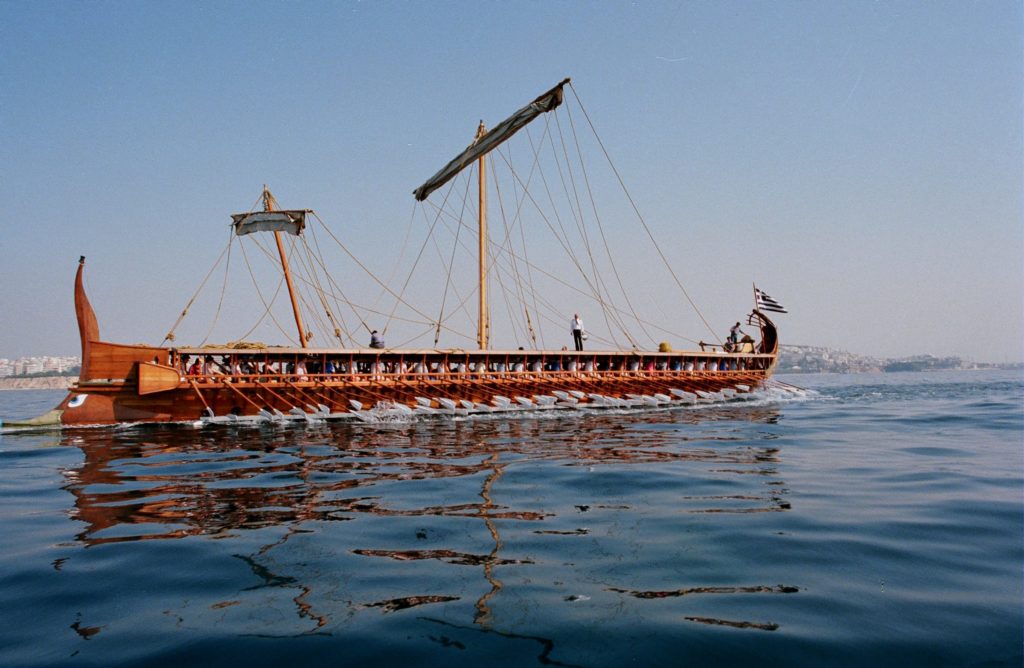
The origin of the sea anchor as we know it today can be found in Ancient Greece and specifically around 592 BC.
As sea people, ancient Greeks used to take long journeys, and they often found themselves in remote places when they needed to tie their ships down.
In Homer’s epics, the sea and ships are prominent, both in the Iliad and the Odyssey, written in the 8th century BC.
Also in Argonautica (3rd century BC) by Apollonius of Rhodes, the sea journey for the search of the Golden Fleece is the key element.
The ancient Greeks had to invent the anchor because it was an absolute necessity.
Greeks are sea people
There is a mention of sea anchors in Ancient Greece as early as 600 BC in a poem by Alkaios, who lived about that time:
I do not understand the direction of the winds; for now the wave rolls on this side, now on that and we are borne through the middle with our black ship belabored by a very big storm.
For the bilge-water covers the step of the mast and the sail already is all ripped apart and there are great tents down it, and the anchors are loosened, and the rudders… both feet of the sail remain in the lines, and only this saves me…
Some historians do not agree with the word “anchor” used in the text, arguing that it is not possible for a ship to be anchored while sailing. They suggest there was probably another word in the place of “anchor” meaning ropes of some kind.
In Homer’s age, anchors were not known
The iron anchor (άγκυρα in Greek) was unknown in the Homeric age (c. 750 BC), as there is no mention of such in his epics.
Ancient Greeks used large stones (eunai, sleepers) in their stead.
Making long sea journeys, they often needed to tie the ship down when there was no place to dock.
Therefore, they needed a way to weigh the ship down enough so that it wouldn’t move around when it couldn’t be tied.
They used baskets of stones, large sacks filled with sand, and wooden logs filled with lead, tied with ropes over the side of the boats to keep them steady.
Hence, the first anchors were actually buckets that were filled with stones. These buckets would grab onto the dirt at the seafloor and keep the ship in place, according to Apollonius of Rhodes.
The ancient Greeks called those first anchors “teeth,” (οδὁντες in Greek). The more the buckets, the steadier the ship.
According to Pliny the Elder (23-79 AD), the modern anchor was first invented by Eupalamus and was improved by Anacharsis from Scythia, a region influenced by Greek culture in the Cimmerian Bosporus, afterwards.
The remains of one found near Cyrené afford evidence that for a ship of some two hundred tons, the anchor weighed about 1,400 pounds.
The anchor was often slung over the stern, and, when in use, had its position marked by cork buoys. The cables were sometimes of chain but usually of rope.
Afterwards, anchors were generally made of iron, and their form, as may be seen from depictions on coins, resembled the modern anchor.
See all the latest news from Greece and the world at Greekreporter.com. Contact our newsroom to report an update or send your story, photos and videos. Follow GR on Google News and subscribe here to our daily email!



